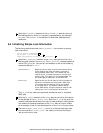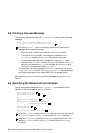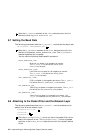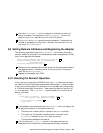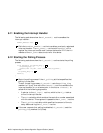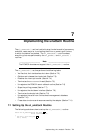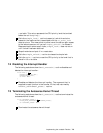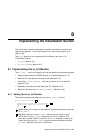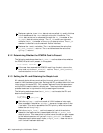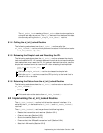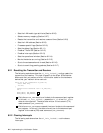
s variable. This value represents the CPU priority level that existed
before the call to splimp( ).
2
Calls the simple_lock() routine to assert a lock with exclusive
access for the resource that is associated with the el_softc_lock
data structure. This means that no other kernel thread can gain access
to the locked resource until you call simple_unlock( ) to release it.
Because simple locks are spin locks, simple_lock( ) does not return
until the lock has been obtained.
3 Stops the device and puts it in a reset state.
4 Calls the simple_unlock( ) routine to release the simple lock.
5 Calls the splx( ) routine to reset the CPU priority to the level that is
stored in the s variable.
7.4 Disabling the Interrupt Handler
The following code shows how the el_unattach( ) routine disables and
deletes the interrupt handler:
if (sc->hid) { 1
handler_disable(sc->hid);
handler_del(sc->hid);
sc->hid = NULL;
}
1 Disables and deletes the interrupt handler. The argument that is
supplied to each function is the handler ID that was returned by
handler_add in the el_probe( ) routine.
7.5 Terminating the Autosense Kernel Thread
The following code shows how the el_unattach( ) routine terminates the
autosense kernel thread:
if (sc->autosense_thread) {
1
thread_force_terminate(sc->autosense_thread);
sc->autosense_thread = NULL;
}
1 Terminates the autosense kernel thread.
Implementing the unattach Routine 7–3



